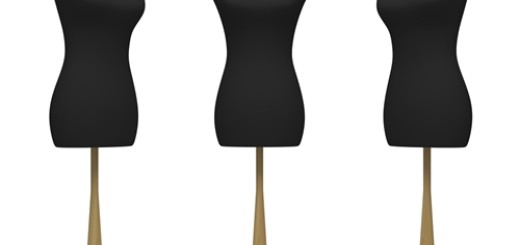Sometimes the stigma that sticks to your retail store's brand isn't the identity you want. Goodwill knows this better than anyone. A well-known thrift store and resale shop, this nonprofit entity doesn't have the image typically associated with high-end retailers, but it does sell designer clothing (albeit, already used). While the merchandise may be an eclectic array of styles that span across the decades, it's actually what modern shoppers are looking for.
"In a world of disposable clothing, young people are looking for vintage clothing to express their personalities," Matti Leshem, CEO and founder of multimedia branding firm Protagonist, told Adweek.
The 18- to 24-year-old shoppers are looking for more diversity and excitement than typical department stores can offer. Consignment shops like Goodwill are grabbing at this opportunity by creating a visual merchandising strategy that draws young consumers in and keeps them in the store. If Goodwill can achieve a designer-like store with donated clothing, you can too with the products you sell. Take some tips from this thrift store pro and other resale shops jumping on the boutique bandwagon:
Use merchandise to set a scene
Typically, stores use retail display fixtures to create displays of products that envelope shoppers in an experience. The Houston Chronicle gives the example of presenting items under a Christmas tree during the holiday season rather than just showcasing them on shelving units. For thrift stores it's quite likely than a artificial Christmas tree would make it in their donation bins, meaning they can repurpose for-sale items as display fixtures in themselves.
Goodwill has done this with their display of antique items by utilizing bookcases and tables to display the vintage merchandise. When customers walk through this section of the store, it's like they're walking into grandma's basement. The nostalgic style is a result of a successful visual merchandising strategy that effectively tells a story for customers.
Group like items together
Though this is usually a basic rule in all visual merchandising game plans, it's especially important for thrift stores or retail shops that have a large variety of items. Not only does consolidating products create an easy walkway for patrons to get around the store, but the organization caters to the human need for patterns and consistency. Thrift stores hardly ever have two of the same items, so scattering products around the store looks like a cluttered mess. By grouping men's shirts on one clothing rack and women's dresses on another, for example, customers are able to more easily find what they're looking for.
Don't forget about mannequins
Throw some style sense into your visual merchandising strategy by displaying coordinating clothing items on mannequins. Since most of the merchandise comes in the form of donations, thrift stores don't have complete control over the inventory they get. Despite the mismatched pieces, they are still able to dress up mannequins to mimic an upscale boutique, demonstrating that any retail store can easily make this happen. Add accessories such as jewelry, purses, hats and sunglasses to upsell the outfit, showing consumers how great the ensemble could look on them.
Goodwill is revamping their visual merchandising strategy, and so can you. Use their design tools in your own retail space, and you'll see the benefits of having a well-organized and visually appealing store.



